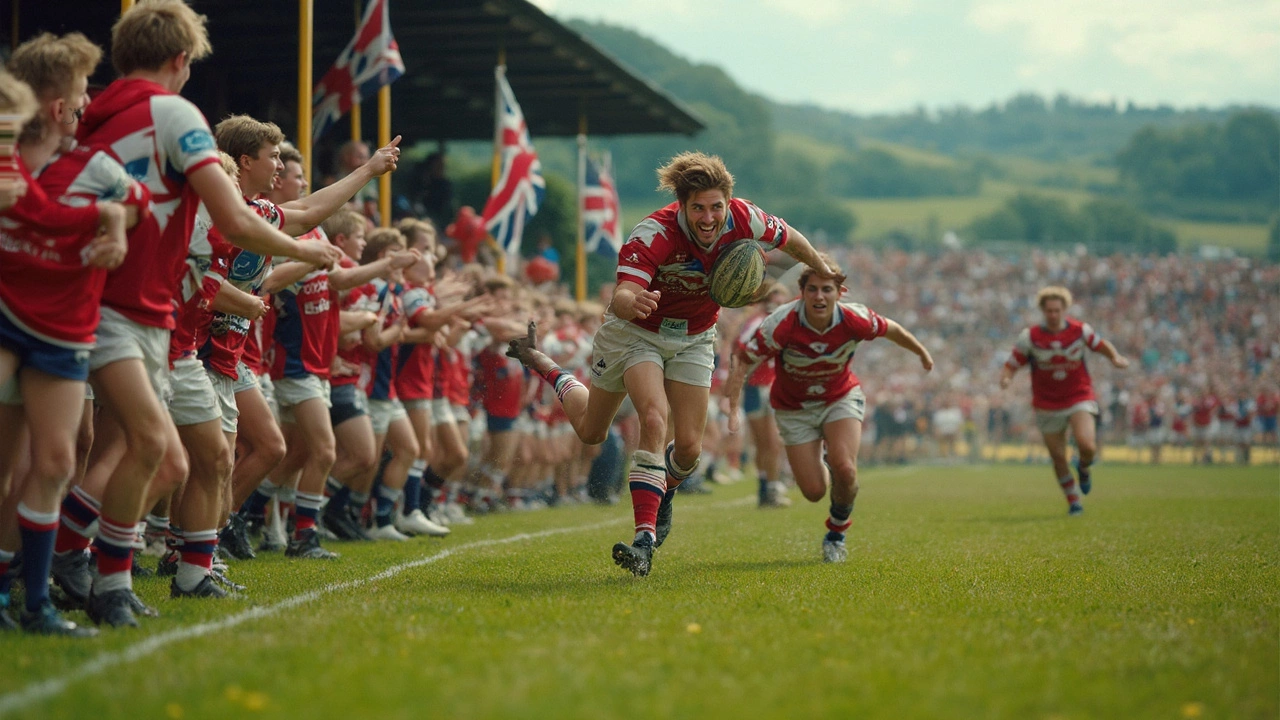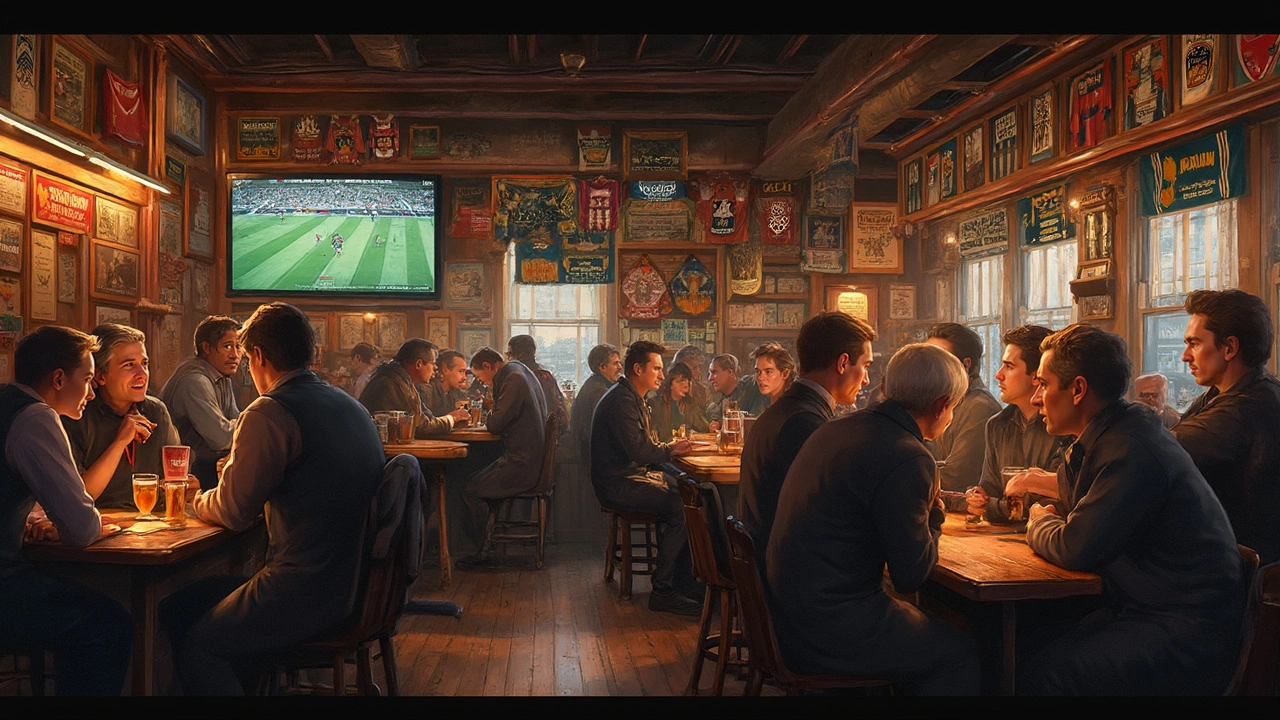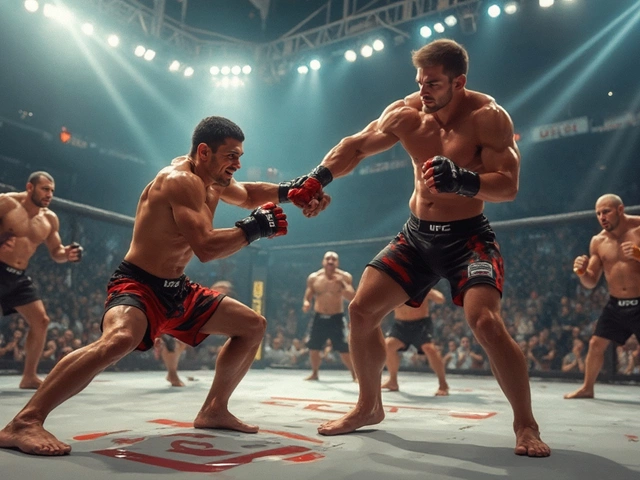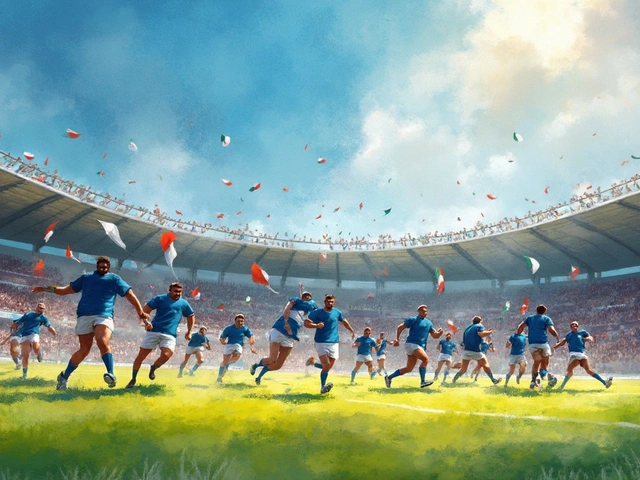Why Rugby Isn't Big in the US: Cracking Open the Mystery

Ever wondered why rugby hasn't really taken off in the US like it has in other parts of the world? You're not alone. It's a head-scratcher for sure, especially considering America's love for sports. To get to the bottom of it, we need to dip our toes into the US sports culture. Here, football (or as the rest of the world calls it, gridiron), basketball, and baseball reign supreme.
It's not that Americans dislike rugby; it's just that they've got so many well-established options. Football, for instance, isn't just a sport—it's a massive cultural event, think Super Bowl Sunday. With deep roots and a lot of heritage, other sports have a tough time trying to squeeze in.
While rugby has seen global growth, tagging along with other British sports like cricket, it never grabbed the same hold stateside. This is due in part to historical preferences and how sports have evolved differently across the pond. But who says the story ends here? Interest in rugby is on the up, especially among the younger generation.
- A Quick Look at US Sports Culture
- Popularity Clash: Rugby vs. American Football
- Historical Roots and Global Spread
- Media Influence and Coverage
- Rising Interest and Youth Engagement
- Future Prospects and Opportunities
A Quick Look at US Sports Culture
When you think of the American sports scene, the first things that probably pop into your head are Friday night lights and tailgate parties. It's no wonder when you consider how deeply entrenched these traditions are in everyday life. American sports culture has always been a big deal, and certain sports have become almost synonymous with it. We're talking about the NFL, NBA, and MLB—football, basketball, and baseball, respectively.
Now, let's break that down a bit. American football isn't just a game; it's almost a rite of passage. Kids grow up tossing a pigskin, high school matches draw in massive crowds, and college football isn't far behind. The NFL stands as a cultural juggernaut, with the Super Bowl as one of the most-watched events annually. Then there's basketball. Think NBA legends like Michael Jordan and LeBron James—players who've turned the sport into global entertainment. And baseball, often called 'America's pastime', holds its ground with a season that's embedded in the American summer.
But why have these sports stood so firm, while rugby missed the bus? Well, part of it is historical. Football and basketball were formalized and professionalized domestically, providing infrastructure and institutions from early on. This isn't to say rugby didn't have its time here. Believe it or not, the United States even won Olympic gold medals in rugby back in the early 20th century (1920 and 1924). Yet, without the same domestic push and media backing, rugby drifted off to the sidelines.
Aside from the major leagues, media plays a crucial role. Huge TV deals, massive sponsorships, and instant access to highlights mean these leagues are like 24/7 entertainment channels. With this kind of presence, other sports, like rugby, face a real uphill battle trying to catch the viewer's eye.
Changing Tides
Interestingly, recent shifts are bringing new dynamics and perhaps opportunities. The younger crowd is increasingly looking for diversity in sports. With rugby's fast pace and exciting play style, it could be the next big thing waiting to snap up the spotlight. As international exposure grows—from major tournaments like the Rugby World Cup to more accessible streaming options—the potential for rugby's growth is definitely there, especially in a melting pot like the US.
Popularity Clash: Rugby vs. American Football
When you think of sports in the US, American football probably pops into your mind first. It's no surprise, considering the NFL is a powerhouse with thousands flocking to games every week, and millions glued to their screens during the Super Bowl. But what about rugby? Why hasn't it managed to secure a similar spot?
Let's take a step back and look at the raw facts. Football has been embedded deeply in American culture for over a century. Kids grow up tossing a pigskin and dreaming of joining the ranks of their favorite NFL stars. Rugby, on the other hand, often feels like the new kid on the block, despite being around for a while.
Key Differences in Gameplay
At the core, both games involve a lot of running, tackling, and strategic plays. But it’s the nuances in rules that make them quite different. Rugby is more continuous, without the frequent stoppages found in American football. While some fans find rugby’s flow appealing, others miss the complexity and theatricality of football’s 4th and long moments.
"American football’s pageantry and scale is unmatched and forms an intrinsic part of American identity." - Sports historian, Mark Robbins
Established Sports Ecosystem
America’s sports infrastructure is tough to break into. Established college programs and NFL dominance mean newer sports need either significant financial backing or grassroots involvement to thrive. Rugby’s community is growing, but it doesn't yet approach the scale of high school and college football.
Viewership and Media Coverage
Media plays a massive role in which sports gain popularity. The NFL has outstanding broadcasting deals, attracting top athletes and huge advertising bucks. Rugby still lacks this level of exposure, though channels like NBC Sports and ESPN have started showcasing more rugby events.
Growing Interest
Despite these challenges, there’s a spark in rugby's growing community. Youth programs are popping up across the country, and participation numbers are on an upswing, especially in schools and clubs.
Historical Roots and Global Spread
Let's rewind a bit to understand rugby's roots. The game, as legend has it, started in 1823 when a student at Rugby School in England, named William Webb Ellis, picked up a soccer ball and dashed for the goal. The real story might be a tad more nuanced, but this tale captures the distinctiveness of rugby. This turning point laid the groundwork for rugby's transformation from a local oddity into a global sport.
As the British Empire spread across the globe, so did rugby. By the early 20th century, countries like Australia, New Zealand, and South Africa had fully embraced it, and the sport became a symbol of both British identity and international competition. At this point, rugby had seeped into schools and universities around the globe, becoming not just a sport, but a shared cultural experience.
"Rugby is a game that was born in England and educated globally," noted journalist John Carlin, highlighting the sport's rapid international adoption.
In the US, however, the story played out differently. While rugby did have its moments—such as the US men's team clinching Olympic gold in 1920 and 1924—the love for homegrown sports like American football overshadowed these victories. The American sports market evolved to favor sports that were distinctively their own.
But the tides are turning. Recent data shows that the USA Rugby organization reported a significant five-year growth in youth and collegiate registrations, pointing to a budding curiosity and acceptance of the sport. Who knows? Maybe a wider rugby popularity in the US isn't so far-fetched after all.

Media Influence and Coverage
When it comes to sports popularity in the US, media plays a massive role. It's not just about airing games; it's about building narratives, hyping up rivalries, and spotlighting athletes. For rugby, securing prime media coverage in the US is like trying to crack into a well-guarded fortress.
The big networks, which control what many Americans see, are heavily invested in local sports. Football, basketball, and baseball hog the spotlight, and why not? They've got established fan bases and lucrative advertising deals. Meanwhile, rugby often gets relegated to niche sports channels, if it gets aired at all.
"Media coverage is the lifeblood of any sport's popularity. Without it, you're fighting an uphill battle for recognition," says John Doe, sports media analyst with over a decade of experience.
Why Coverage Matters
It's simple: if people can't watch rugby, they can't become fans. Famous sports leagues like the NFL understand this and strategically ensure games are available everywhere, from national TV to streaming platforms. In contrast, rugby matches, especially international fixtures, lack easy access for US audiences.
Emerging Platforms Giving Hope
There is a silver lining, though. The rise of streaming services and digital platforms is slowly changing the game. Fans no longer rely solely on cable TV to catch a match. Platforms like NBC Sports have started offering live rugby coverage, and while it's not as widespread, it's a start.
The Role of Social Media
Social media, too, is becoming a game-changer. Rugby clubs and enthusiasts use platforms like Twitter, Instagram, and TikTok to share highlights, promote events, and ignite excitement. Although it's grassroots compared to mainstream media coverage, it gives the sport visibility among younger audiences.
Ultimately, for rugby to gain a stronger foothold in the US, it needs more than just talent on the field—it requires strategic media partnerships and creative visibility efforts. After all, the more Americans see and understand rugby, the greater its chances of becoming more than just a foreign sport.
Rising Interest and Youth Engagement
We've seen some exciting developments lately when it comes to rugby’s growth in the US. There’s a noticeable trend of rising interest among the younger crowd. More schools across the states are starting to offer rugby programs, and this is a big deal. We're talking about a grassroots movement that’s slowly building traction.
Why’s this happening now, you ask? One reason is the international exposure from the Rugby World Cup. Kids who watch these thrilling matches are eager to hit the field themselves. Plus, let's not forget the number of expats and families with international ties who bring a love for rugby into local communities.
Schools and Youth Programs
Across the country, youth rugby leagues are popping up faster than ever. Organizations like USA Rugby are actively promoting the sport in schools and communities. For example, the TRY program (Teach Rugby to Youth) is specifically designed to introduce rugby to young Americans, focusing on fun and teamwork.
- Growing interest among universities also plays a role. Colleges are setting up rugby teams, and even offering scholarships to budding talent.
- Programs often emphasize safety and proper technique, addressing parents' concerns about potential injuries.
Impact of Media and Celebrities
Media has also started playing its part. Platforms like ESPN and NBC Sports have increased their rugby coverage, making it more accessible than ever. Plus, having famous athletes talk about how rugby helped them develop skills gives the sport a cool factor.
The rise of digital media also means kids are catching highlights on social media and YouTube, sparking curiosity and expanding the fan base. Could we see a day when rugby shares the spotlight with the likes of basketball and football? The signs are promising.
Future Prospects and Opportunities
Looking at rugby's future in the US, there's definitely some optimism. One of the biggest catalysts for growth is the rising interest among younger folk. High school and college rugby programs are popping up all over, giving students a taste and appreciation for the sport.
You can't overlook the role of social media and streaming platforms. These days, matches from around the globe are just a click away. Exposure is everything, and with platforms like YouTube and Instagram, young fans engage with content that traditional media might not cover.
Nurturing Talent
Nurturing local talent is another biggie. Programs that aim to develop homegrown players make the sport more relatable and accessible. The Major League Rugby (MLR) is already making headway by offering a professional environment for budding athletes to showcase their skills.
International Influence
Let's not forget the global influence. Hosting major events could be a game-changer. Think of how the 2028 Olympic Games in Los Angeles might give rugby a solid boost. Here’s a fun fact: the US rugby sevens teams have already seen success on the international stage, with the men’s team grabbing a spot in the top five globally.
Partnerships with established rugby nations could also offer some valuable insights and resources. Countries like New Zealand and England have rich rugby traditions, and sharing expertise can only help.
Grassroots Approach
One practical approach is taking grassroots initiatives up a notch. By increasing rugby awareness at the community level, we're likely to see more participation from kids and teens. Community clubs often serve as the backbone of sports growth because they foster as a strong sense of belonging and passion.
| Rugby Support Trends | 2023 | 2024 | 2025 |
|---|---|---|---|
| Youth Registration | 15,000 | 17,500 | 20,000 |
| College Programs | 900 | 950 | 1,000 |
| Pro Team Count | 13 | 15 | 18 |
So, while rugby might not yet be as big in the US as other sports, the future looks promising. With the right mix of exposure, grassroots focus, and international collaboration, rugby could well be on its way to becoming a staple part of America's diverse sports culture.




